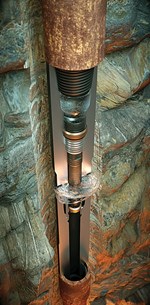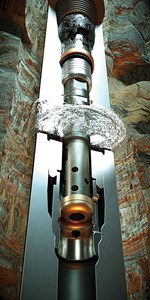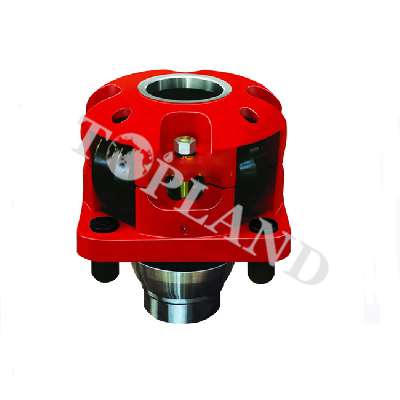DRILLING TECHNOLOGY: SIMPLE SOLUTION RAPIDLY RECOVERS STUCK DRILLSTRING IN REMOTE WELL
Stuck pipe is often encountered during drilling operations and can cost operators millions of dollars to remediate. Common causes of stuck pipe include key seating, pack-off, bridge-off, wellbore collapse, and differential sticking. In all of these cases, the result is unplanned delays and additional cost at the expense of the operator. The actions required to remediate are often complex and can require days or weeks of non-productive time (NPT), plus the need for resources that may not be readily available.
When the drillstring becomes stuck, immediate action will prove to be the most effective in most cases. However, while the drillstring may be partially moved, circulation and rotation may not be possible. It is, therefore, vital for personnel on the rig to be able to identify the cause to quickly progress with the most efficient method to free the pipe. As each stuck pipe situation is slightly different, the solution to move and disengage it from the well often demands a tailored solution. Operators often find themselves lacking available options for recovering from a stuck pipe scenario and, therefore, are limited in their responsiveness.
In remote locations particularly, operators can now employ Coretrax’s HyPR HoleSaver as a contingency solution that can negate the need for costly, logistically cumbersome, and potentially hazardous solutions.
TRADITIONAL STUCK PIPE PRACTICES
If the pipe cannot be moved by set down weight or mechanical overpull, or rotated using torque applied at surface, the next option for an operator is downhole tools. Drilling jars have, traditionally, been the only option for a stuck pipe contingency. Though jars can be effective, they are expensive and often cannot resolve the stuck pipe issue. Generally, the pipe is worked and jarred immediately in an attempt to free the drillstring and continue drilling operations. This method can take days and, in some cases, longer, introducing additional NPT into the operation.1
If the stuck pipe scenario cannot be resolved, the last resort is to perform a disconnect that traditionally requires mobilization of a wireline crew to deploy an explosive charge, known as a backoff or stringshot. The explosives must be detonated above the freepoint to sever the string, leaving the stuck pipe as a fish in the well. This technique can be time-consuming, costly, and it introduces a new set of risks into the operation by deploying third-party crews and transporting hazardous materials to the rig site.
Remote locations emphasize the risks and complexity, where it can take several days to transport and set up the wireline unit and explosives, and deploy trained personnel to resolve the issue. Overall, unnecessary operational delays and downtime increase the cost to the operator.
CALL TO ACTION FOR SWIFT REMEDIATION
During a recent drilling project in an extremely remote region of North America, an operator required a contingency solution to be quickly accessed and used, in the event of a stuck pipe incident. Due to the drilling location, logistical support and equipment mobilization, response times were known challenges. As a result, the operator deployed Coretrax’s HyPR HoleSaver—the world’s first hydraulic pipe recovery system—as a contingency in its drillstring. The device was selected to maximize hole recovery and ensure that NPT on the rig would be kept to an absolute minimum, Fig. 1. When compared to traditional methods, it can reduce the time of recovery from days to hours.

Unlike conventional methods, which are typically wireline-deployed and include the use of explosives or other high-energy, hazardous sources to sever the string, the hydraulic pipe recovery system is a pre-placed sub or subs within the drillstring. The assembly and dart have no moving parts, and the placement of the assembly can allow for planned severing points within the drillstring. The dart can be deployed by the rig crew at a moment’s notice, and it leverages the abrasive solids in the drilling mud to erode the API pin stress relief groove in the HyPR HoleSaver assembly.
The dart redirects the flow of the drilling mud through a 360° radial nozzle precisely aligned with the API pin stress relief groove in the assembly. The nozzle within the dart accelerates the fluid and results in a controlled washout at the API pin stress relief groove. The high-velocity radial jet of fluid is used to erode and sever the string in just a few hours.

The operator had reached the total depth (TD) on the hole section and while back-reaming out of hole, the string became stuck at 8,000 ft, at a high deviation. Attempts were made to free the string through jarring, spotting lubricants, and applying overpull. After nearly three days working the string and jarring, the operator was unsuccessful at releasing the stuck drillstring. The decision was then made to deploy HyPR dart to activate the HyPR HoleSaver and sever the 6-5/8 REG connection within the assembly, Fig. 2.
The dart was deployed from the surface, and circulation was established at an average rate of 645 gallons per minute (gpm) in 10.4 pounds per gallon (ppg) water-based mud through the severing process.
Within five hours, the HyPR HoleSaver was severed, releasing the stuck drillstring and allowing the operator to circulate the remaining hole clean while tripping out with the retrieved string. This straightforward procedure successfully eliminated the requirement for extraneous tools, crew members, and hazardous materials, such as explosives on the rig. The Coretrax device delivered valuable rig time savings, while reducing risk to the asset and crew.
CRUCIAL CONTINGENCY SOLUTION
The HyPR HoleSaver is an essential, simple-to-use back-up option for drilling operations in any region, for any type of well development. As it can be quickly and deliberately deployed, it empowers the end-user to maximize hole recovery, reduce operational time, and mitigate risk to crew during the recovery of stuck pipe. It is versatile enough to be configured for any drillstring and can provide redundant sever points within the string. It is also compatible with Coretrax’s DAV MX™ Circsub, a downhole circulation bypass tool, and the company’s contingency premium float solutions, for the ultimate contingency string.
The process itself is precise, repeatable and predictable It enables operators to quickly resolve a stuck pipe scenario and immediately begin remediation.
Since it was developed in 2014, the drilling tool is viewed by major operators as a vital cost-saving solution to mitigate non-productive time. Stuck pipe while drilling is estimated to cost the oil and gas industry hundreds of millions of dollars every year—the device can be used to cut down on this cost.
In 2019, a major operator in the UAE recovered from stuck pipe by severing its drillstring in just 2.5 hr after the BHA became stuck at 9,070 ft, due to a pack-off in a challenging formation. The operator initially activated the DAV MX CircSub to regain and establish circulation, to control the well before the dart was subsequently dropped to sever the string.
After 2.5 hr of pumping at 550 gpm, the operator applied some torque, and the string parted with ease, enabling personnel to immediately trip out of hole. This avoided the need for explosives, chemicals, or any additional equipment or rig personnel. The operator recovered 8,335 ft of challenging hole, and was able to begin sidetrack operations shortly afterwards.
One of the quickest stuck pipe severs, using a drilling tool, was after a major operator became stuck at around 13,000 ft while experiencing heavy losses. After jarring attempts failed, and having previously spent two days mobilizing explosives to manage an earlier stuck pipe incident, the operator opted to deploy the HyPR HoleSaver, placed in the string for such an event. Requiring no additional topside equipment or personnel, the device severed the string in just one hour.
Another operator in Norway experienced two stuck pipe events in the same hole section. The tool was deployed, and it successfully severed the string in both cases.
STUCK PIPE RISK MANAGEMENT
This simple stuck pipe solution improves safety and can save drilling operators days or even weeks of the time and expense caused by NPT. In remote regions especially, it is a proven alternative to mobilizing specialized personnel and equipment, including hazardous equipment such as explosives, to manage stuck pipe incidents, giving operators greater control of their operations.




 Upload RFQ
Upload RFQ





 Twitter
Twitter Linkedin
Linkedin Facebook
Facebook YouTube
YouTube Sales@toplandoil.com
Sales@toplandoil.com +86 21-50890868
+86 21-50890868 Head Office: 8-1011,Lane 5600, Chuansha Road, Pudong, Shanghai, China
Head Office: 8-1011,Lane 5600, Chuansha Road, Pudong, Shanghai, China 